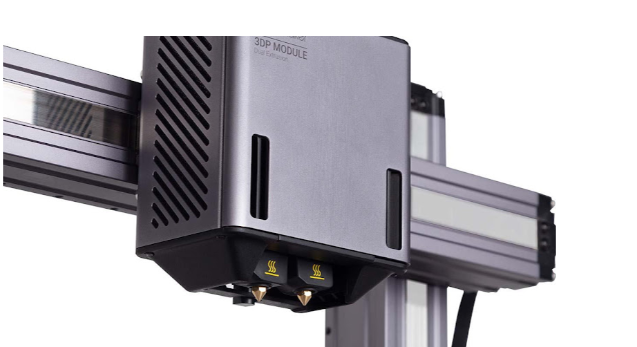The 3D printer nozzle, a seemingly simple component, is a marvel of engineering that relies on complex principles of heat transfer and fluid dynamics to transform solid filament into precisely layered objects. Understanding the science behind this process unlocks a deeper appreciation for 3D printing technology and empowers users to optimize their print settings for superior results. This article explores the physics of how nozzles melt and extrude filament, delving into the intricacies of heat transfer and flow dynamics.
Table of Contents
Heat Transfer: Melting the Filament
The primary function of the nozzle is to melt the solid filament into a viscous liquid that can be extruded. This process relies on efficient heat transfer from the heater block to the filament. Several mechanisms contribute to this transfer:
- Conduction: Heat is transferred through direct contact between the heater block, the nozzle, and the filament. The thermal conductivity of the materials used (typically brass or stainless steel for the nozzle, and aluminum for the heater block) plays a crucial role. Materials with higher thermal conductivity transfer heat more efficiently.
- Convection (Minimal): While some convective heat transfer occurs through the air surrounding the nozzle, its contribution is minimal compared to conduction, especially when the nozzle is insulated or enclosed.
- Radiation (Minimal): Similarly, radiative heat transfer from the heater block to the surrounding environment is present but plays a less significant role in the melting process itself.
The nozzle’s geometry is designed to maximize conductive heat transfer. The narrow tip of the nozzle concentrates the heat, ensuring efficient melting of the filament just before it exits the orifice. The internal bore of the nozzle, where the filament travels, is also crucial for efficient heat transfer. Its diameter and surface finish influence the contact area between the filament and the heated nozzle walls.
The temperature control system of the best 3D printer plays a vital role in maintaining a consistent temperature at the nozzle. This system typically uses a thermistor or thermocouple to measure the nozzle temperature and a PID (Proportional-Integral-Derivative) controller to adjust the power delivered to the heater cartridge. Precise temperature control is essential for consistent melting and extrusion.
Flow Dynamics: Extruding the Melted Filament
Once the filament is melted, it flows through the nozzle’s orifice under pressure exerted by the extruder motor. This flow is governed by principles of fluid dynamics, specifically the flow of viscous fluids through narrow channels.
- Viscosity: The viscosity of the molten filament is a critical factor. Viscosity describes a fluid’s resistance to flow. Different filament materials have different viscosities at a given temperature. Higher viscosity means the material flows less easily. Temperature significantly affects viscosity; as temperature increases, viscosity decreases, making the material flow more readily.
- Pressure: The extruder motor applies pressure to the filament, forcing it through the nozzle. The pressure required depends on the filament’s viscosity, the nozzle’s diameter, and the desired flow rate. Smaller nozzle diameters require higher pressure to maintain the same flow rate.
- Laminar vs. Turbulent Flow: Ideally, the flow of molten filament through the nozzle should be laminar, meaning the fluid flows in smooth, parallel layers. Turbulent flow, characterized by chaotic and irregular motion, can lead to inconsistencies in extrusion and print quality. The Reynolds number, a dimensionless quantity, helps predict whether the flow will be laminar or turbulent. In typical 3D printing scenarios, the flow is generally laminar due to the small nozzle diameters and relatively low flow rates.
- Melt Flow Rate (MFR): This is a measure of how easily a thermoplastic material flows when molten. It is typically expressed in grams per 10 minutes. A higher MFR indicates a lower viscosity and easier flow.
Nozzle Geometry and its Influence
The nozzle’s geometry significantly impacts both heat transfer and flow dynamics:
- Orifice Diameter: The diameter of the nozzle’s opening directly affects the resolution and flow rate. Smaller diameters allow for finer details but require higher pressure and slower print speeds. Larger diameters allow for faster printing but reduce resolution.
- Internal Bore Geometry: The shape and surface finish of the internal bore influence the flow characteristics. A smooth bore minimizes friction and promotes laminar flow.
- Nozzle Length: The length of the nozzle affects the residence time of the filament within the heated zone, influencing the degree of melting.
Material Considerations
The material of the nozzle itself also plays a role:
- Brass: Offers good thermal conductivity and is relatively inexpensive but is susceptible to wear, especially when printing abrasive filaments.
- Stainless Steel: More wear-resistant than brass but has lower thermal conductivity.
- Hardened Steel: Offers excellent wear resistance and is ideal for printing abrasive filaments.
- Other Materials (e.g., Copper, Ruby): Offer specialized properties such as even higher thermal conductivity or extreme wear resistance.
Conclusion
The best 3D printer nozzle is a critical component that relies on intricate principles of heat transfer and fluid dynamics. Understanding these principles allows users to make informed decisions about nozzle selection, print settings, and material choices. By optimizing these factors, users can achieve higher print quality, faster print speeds, and greater overall success in their 3D printing endeavors.

